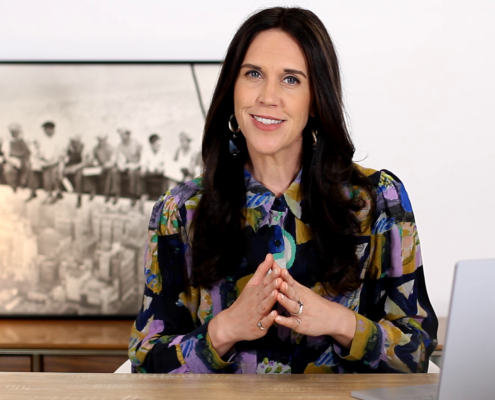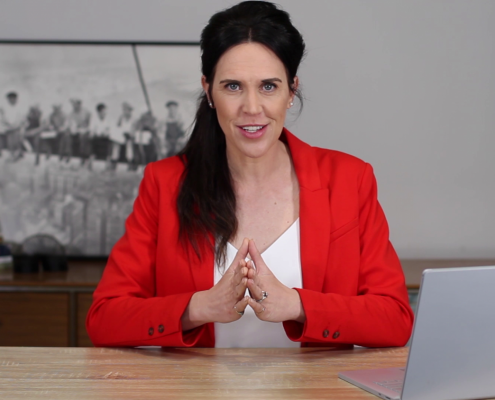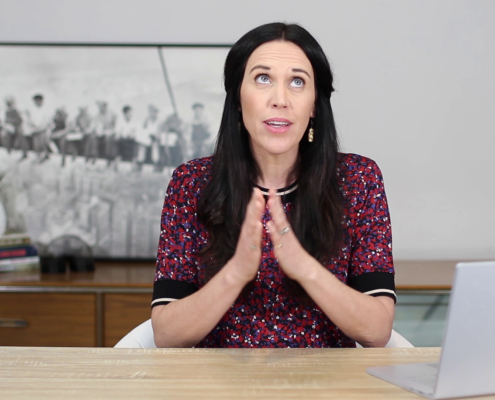#45 It’s Time to Add Reciprocity to Your Business Model

You’re likely familiar with the phrase, “People are our greatest asset”, but what does that actually mean? In practice?? How do you ensure that people actually feel like they matter and they’re not disposable? Demonstrating to your employees that their life and their health matters, is the essence of heartfelt leadership – putting people first because every life matters. But this isn’t just warm and fluffy stuff, there are financial, performance and cultural rewards for focusing on the safety, health and well-being of your employees, let alone the benefits to their personal health and well-being. The concept of ‘mattering’ is by no means a new one. It has been defined as the feeling that others depend on us, are interested in us, and are concerned with our fate and this feeling that we get that our life matters increases self-esteem and decreases depressive symptoms, anxiety, and deviant behaviour. When people feel their life matters, they find purpose in what they’re doing, they feel supported, safe and cared for, they’re engaged in their work and feel satisfied and motivated and this benefits your employees, your profits, your reputation, your innovation and the overall organisational performance. For example, in a 2016 study of over 6,000 (6,207) truck drivers, it was found that their perceptions of the company’s safety climate was predictive of their levels of job satisfaction, engagement and subsequent turnover rate (Huang, Y.H, et al., 2016). In a separate survey, 60% of CFOs found that the ROI on injury prevention programs and activities was $2 or more, and over 40% said productivity was the greatest benefit of an effective workplace safety program. In another survey of financial decision-makers the average perceived ROI on safety investment was over $4 ($4.41) (Huang, Y, et al.,2009). Others have this number even higher. And it’s not just a focus on safety that has benefits, organisations that implement psychologically safe and healthy workplace strategies are, on average, better performers in all key performance categories from health and safety to key human resource measures to profitability and shareholder returns. Not to mention that a psychologically safe and healthy workplace mitigates risks to physical and mental health while improving people’s well-being and resilience, ultimately making an overall positive impact on the health, happiness and resilience of our society. And we also know that investors are increasingly interested in safety, health and well-being matters because there is clear evidence to show that a company will not have long-term success in terms of profitability and performance, if the people in the company are not mentally and physically healthy and where they don’t feel safe. Investors are increasingly using workplace safety and health measures to screen out underperforming stocks and are showing stronger returns for doing so. In a study that analysed the stock market performance of companies recognised for their health and safety, it was found that there was an average annual return of just over 6% – well above the market average of just under 3% Investors are not only increasingly interested in safety, health and well-being matters, they’re increasingly frustrated that many organisations still struggle to show the impact on financial performance and profitability from poor management of safety, health and well-being. And why wouldn’t they be when a Harvard Business School study found that for every $1 invested in a company focused on environment, social and governance issues the result was a $28 return vs. $14 for those companies not yet focused on ESG. So if our people are our greatest asset, and a significant contributor to organisational success, this means that it’s not just from an ethical and legal perspective that the board should be concerned with whether employees feel cared for, safe, secure and valued, it’s also a corporate governance issue because ensuring the company performs is a primary role of the board. So how do we do this? And what is the board’s role? Studies have shown how organisational habits form among workers working for the same company and these companies themselves leverage these habits to change culture, increase performance, and improve many other business metrics that ultimately make the business more profitable, innovative, safe, healthy and more attractive to various stakeholders, including employees and shareholders. Charles Duhigg coined the term keystone habit in his book The Power of Habit. A keystone habit is a central habit that affects or governs other habits. They’re really important because when you develop a positive keystone habit, it will start a chain of events that produces a number of other outcomes and it’s why if you’re going to develop a habit, keystone habits are the most essential ones to develop. So take a guess at what might be the keystone habit in your organisation, that will create multiple benefits? Well let me ask you this, do you know of any other personal need or desire that is uniform across job title, level of seniority, area of the business, nationality, age, sexual orientation or religion …? The one thing that everyone on this earth cares about, is their personal health, safety and well-being. How powerful is that?! We all share a common desire to be safe, healthy and happy and to feel like what we’re doing here on this earth matters! Like we would be missed if we were not here. That is universal. These are basic human needs. Health, safety and well-being is therefore what’s called a unifying point of collaboration. So the idea is simple: create a workplace culture that truly values and cares for employees, by putting an incredible amount of time and effort into demonstrating that the safety, health and well-being of your employees is your number one priority, and the rest of the transformation will take care of itself – “if you build it, they will come” right? When people feel proud of where they work, and they feel their employer genuinely cares about them, it’s nature to want to give back in some way, and this discretionary energy, this pride, commitment to the organisation, whatever you want to call it, transforms itself into a sense of reciprocity and it goes beyond just looking at preventing incidents. People want to give back to their employer for investing in them and they will do this the only way they can, which is to utilise their skills and their knowledge to improve things in the company, like productivity through efficiencies or innovation, or company culture by caring for people the same way they feel cared for. In fact, 61% of workers say they would work harder for an employer that invested in their health and safety (Aviva). So what can you do in your boardroom to demonstrate that you care about the health, safety and well-being of your employees? Get a reading on whether your employees feel like they matter. Look at conducting a climate survey on safety, health and well-being if you’re not already doing so. Ask yourself “when was the last time our board spoke with your head of health and safety?”. And not about numbers; about culture, about stories of how people feel; for example, how easy do people in your organisation feel it is to do their work safely and with their health in mind, amongst all the competing priorities, conflicting goals, rules and procedures? Because the goal is always to make it easy for people to do their job the right way, but you need to be open to hearing about those roadblocks. Look at your incentive schemes and be honest as to whether they make it easy for management to invest in safety and health, over profit, where there’s a conflict between the two. As always, I hope this has helped you in your quest to know what to ask and when to act. Be brave and stay true to your commitment to lead from the heart and I’m confident you will reap the rewards. All my best Sam The business case for investing in safety and health
Increasing interest from investors and other stakeholders
Health & safety is a unifying point of collaboration
Reciprocity as part of your business model
The role of the board
Get your finger on the pulse
Understand employee pain points
Review your incentives


Welcome!
I’m Samantha
I help board members succeed in the boardroom and make a positive impact on the health, happiness and resilience of society through their effective leadership and governance of safety, health and well-being.
RESOURCES
YOU MAY ALSO LIKE…
FEATURED CONTENT
[text-blocks id=”4249″ plain=”1″]
RELATED POSTS

#39 Your Board Might be Missing Red Flags. This is Why
Culture, Director, Lead By Example, Remove the Excuses, Systems
#38 What Does the Dreamworld Tragedy Tell Us About Board Competency in Safety (Part 2)
Director, Lead By Example, Leading Safe & Healthy Work in the Boardroom, Remove the Excuses, Systems
#37 What Does the Dreamworld Tragedy Tell Us About Board Competency in Safety (Part 1)
Director, Lead By Example, Leading Safe & Healthy Work in the Boardroom, Remove the ExcusesEach lesson in the program is between 15 – 30min and there are 4 – 6 lessons in each Habit, so all up, the training is approximately one day as an investment in your governance for years to come!
You have lifetime access so you’re free to go through the program at your own pace.
You’ll also receive a weekly email highlighting my weekly insights into becoming a better leader in the boardroom.
Don’t like it? No problem. You can unsubscribe at any time.

